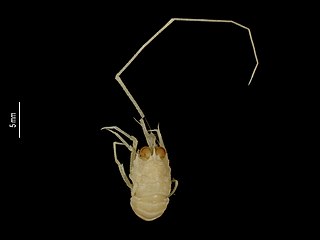
All Japan Pro Wrestling (AJPW/AJP) or simply All Japan is a Japanese professional wrestling promotion established on October 21, 1972, when Giant Baba split away from the Japanese Wrestling Association and created his own promotion. Many wrestlers had left with Baba, with many more joining the following year when JWA folded. From the mid-1970s, All Japan was firmly established as the largest promotion in Japan. As the 1990s began, aging stars gave way to a younger generation including Mitsuharu Misawa, "Dr. Death" Steve Williams, Kenta Kobashi, Gary Albright, Toshiaki Kawada, Mike Barton, Akira Taue and Jun Akiyama, leading to perhaps AJPW's most profitable period in the 1990s.

Maunakea Mossman is an American semi-retired professional wrestler, better known under his stage name Taiyō Kea (太陽ケア). Best known for his work in All Japan Pro Wrestling (AJPW), he is the only wrestler in AJPW's history to have held the Triple Crown Heavyweight Championship, the World Tag Team Championship and the World Junior Heavyweight Championship.

Munidopsis serricornis is a species of squat lobster. It is widely distributed in the world's oceans, being found in the eastern Atlantic Ocean, the western Atlantic Ocean, and the Indo-Pacific. It grows up to a carapace length of 20 millimetres (0.8 in).

Uroptychus is a genus of squat lobsters in the family Chirostylidae found across the Indo-Pacific. The genus Uroptychus contains the following species:

Agononida is a genus of squat lobsters in the family Munididae. In 2022, recognizing that the genus as then defined was paraphyletic, it was divided into three lineages: Agononidasensu stricto and two new genera, Garymunida and Hexamunida. Agononida is distributed in the Indian and Pacific Oceans.
Anomoeomunida is a monotypic squat lobster genus in the family Munididae. The sole a species of is Anomoeomunida caribensis. It occurs in the western Atlantic.

Anoplonida is a genus of squat lobsters, which are flattened dorsoventrally, in the family Munididae, containing the following species:

Babamunida is a genus of squat lobsters in the family Munididae. The genus occurs in the Atlantic, Indian, and Pacific Oceans, with the greatest diversity in the Pacific.

Bathymunida is a genus of squat lobsters in the family Munididae, containing the following species:

Heteronida is a genus of squat lobsters in the family Munididae. They occur in the western Pacific Ocean.

Lauriea is a genus of squat lobsters in the family Galatheidae, containing the following species:

Munididae is a family of squat lobsters, taxonomically separated from the family Galatheidae in 2010.
Munidopsis tuberosa is a species of squat lobster, first isolated from deep waters off Taiwan. M. tuberosa is similar to M. granosicorium, but it differs by the configuration of its carapace and rostrum.
Munidopsis echinata is a species of squat lobster, first found in deep waters off Taiwan. M. echinata is similar to M. colombiana, but differs by lacking an antennal spine on its carapace and having a rather longer antennal peduncle.
Eumunida chani is a species of chirostylid squat lobster first found in Taiwan. This species can be distinguished by its absence of a pad of densely distributed setae on its first pereopod, the anterior branchial margin which bears two spines, and the carpus of its first pereopod carrying only two spines.
Uroptychus anatonus is a species of chirostylid squat lobster first found in Taiwan. U. anatonus and U. anacaena are similar but can be distinguished from each other by the shape of their 4th sternite and the length of their antennal scale. Both species resemble U. maori and U. brucei, but lack a ventral subterminal spine on their first pereopod's ischium.
Uroptychus orientalis is a species of chirostylid squat lobster first found in Taiwan. This species is separated from U. occidentalis by its shorter antennal scale and dactyli P2–4 with their ultimate and penultimate spines being subequal in size.
Uroptychus singularis is a species of chirostylid squat lobster first found in Taiwan. This species is distinguished from U. australis by its single, unpaired terminal spine on its flexor margin of pereopods 2–4.

Anacaena is a genus of water scavenger beetles in the subfamily Hydrophilinae. It is an extant genus but there is at least one fossil species.
Garymunida pilosimanus is a species of squat lobster in the family Munididae. The males measure 48.7 millimetres (1.92 in) on average and the females 22.9 millimetres (0.90 in) on average. It is found off of the coasts of Japan, Taiwan, and Australia, at depths between 295 and 520 metres.











